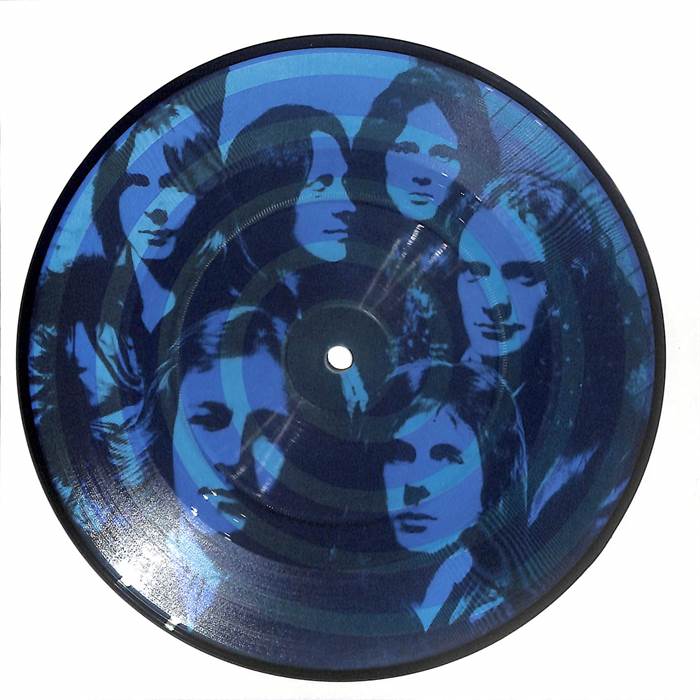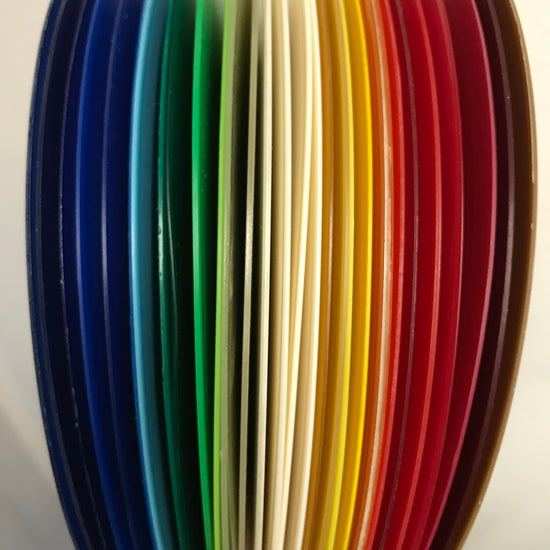And why don't picture discs sound as good as a regular record?
A vinyl picture disc is made by sandwiching a thin, full-colour paper picture between two clear plastic layers. The image is visible through the transparent vinyl, creating a visually striking disc while still allowing for the playback of audio like a traditional vinyl record.
Picture discs can look colourful, loud, and often striking at times, which is why they are often used as display items among collectors. The sound quality doesn’t normally match that of the standard pressing though. This is not always the case, however, as a well-made and looked-after picture disc can actually play very well.
Some of the earliest ‘picture discs’ were what are known as flexi-discs pressed on postcards, which is a method still used today and a good way for labels and artists to promote work in an intriguing, yet cheaper way.
This was a technique often employed in Russia and Poland. Manfred Mann released several records that utilised this technique, pictured below.

The starting point for what most of us would recognise as a picture disc is the same as a normal black vinyl – a flattened PVC puck.
The next step is different though: on either side sits (normally, at least) a strong piece of paper or card with an image printed on it, with a thin piece of polyethylene foil which holds the music pressed on the outside.
It is this thin polyethylene foil that the record’s grooves are then pressed. All of these materials are then pressed together and trimmed to create the final picture disc.
Here's a video showing picture discs being manufactured.
Why do people say that picture discs sound worse?
So, why do people say that picture discs sound inherently worse than their regular, ‘normal-coloured’ counterparts? Well, the answer lies in the very same polyethylene foil we just mentioned.
It turns out that polyethene degrades at a much quicker rate than regular vinyl, and so naturally, will produce a much worse sound when a needle is run over it as time goes on. If you've ever played a flexi-disc, you'll be aware of their playback issues!
There are also extra manufacturing steps associated with the creation of picture discs, which is why a second talking point on them often crops up. Their price.
Record distribution companies are very savvy to the fact that people will likely buy a copy of their favourite album in picture disc form because of how eye-catching they can look. Picture discs will often be bought by people who not only want to listen to their favourite music, but be able to display it at the same time too – and this extra utility often comes at a cost. Literally.
Of course, the cost of a picture disc compared to its ‘regular’ release will largely depend on exactly what album or single it is, but overall, they tend to be more expensive due to their nature of being something of a novelty – not to mention the extra man-hours that go into creating them in the first place.
Another less common type of picture disc are fully clear picture discs, with shaped images set into them. This allows for even more creativity, such as this Guns N Roses 7” that has extra sections to create the shape of a gun.

Examples like this can be particularly sought after, as they are often not produced in large quantities due to the extra labour, materials and time associated with making them.
There is even an ‘uncut’ market that goes hand in hand with these shaped picture discs…
Because every shaped disc is created in the exact same way that a regular record would be, some original pressings with their clear, disc-shaped lacquer still intact can sneak onto the secondary market.
Look below at an example of an extremely rare, uncut Michael Jackson ‘square’ picture disc!
These uncut variations were never intended to be commercially available, with most only being used as image alignment tools. They would then be destroyed as and when manufacturing of the final product had finished.
Finally, a very intriguing moment in the world of picture discs is ‘zoetropes’ – creating moving images through movement. The two concepts slot together perfectly to create incredibly visually impressive records.
This technique was previously used largely for children’s records but has since been used by many contemporary artists such as Kate Bush, Bombay Bicycle Club and Bonobo.

Zoetrope Picture Discs
This printing style was used on records as far back as the early 1970s, and really gained popularity and traction in the mid-1980s.
Another quirk about these records is that images on zoetrope records are often hand-drawn or painted as well, making each one manufactured unique.
Some zoetrope records are also touted to have hidden images and messages printed into them. These messages can apparently only be seen once the record is playing at its correct speed.
One of these records is ‘Plastic Infinite’ by Sculpture. This zoetrope record was released in 2014, and will only show a blurred cacophony of colour when played – that is until a strobe light is shone towards the playing surface.
Click on the link below to watch the official music video for their Zoetrope release!
Blood Records
Our favourite manufacturer of zoetrope discs has got to be the guys over at Blood Records.
They have a brilliant approach to modern vinyl releases, and have put out work by artists including The Rolling Stones, The 1975, Jamie T and Billy Bragg. Their zoetrope records are designed by Drew Tetz, a graphic designer from New York.
You can follow Blood Records on Instagram here, or you can follow Drew here.

See below to watch a YouTube video that details the history of zoetrope records. It includes many more examples, including one from Kate Bush's 1985 hit, 'Running Up That Hill’.









